
How to Use Adafruit MPL3115A2 I2C Barometric Pressure, Altitude, Temperature Sensor: Examples, Pinouts, and Specs
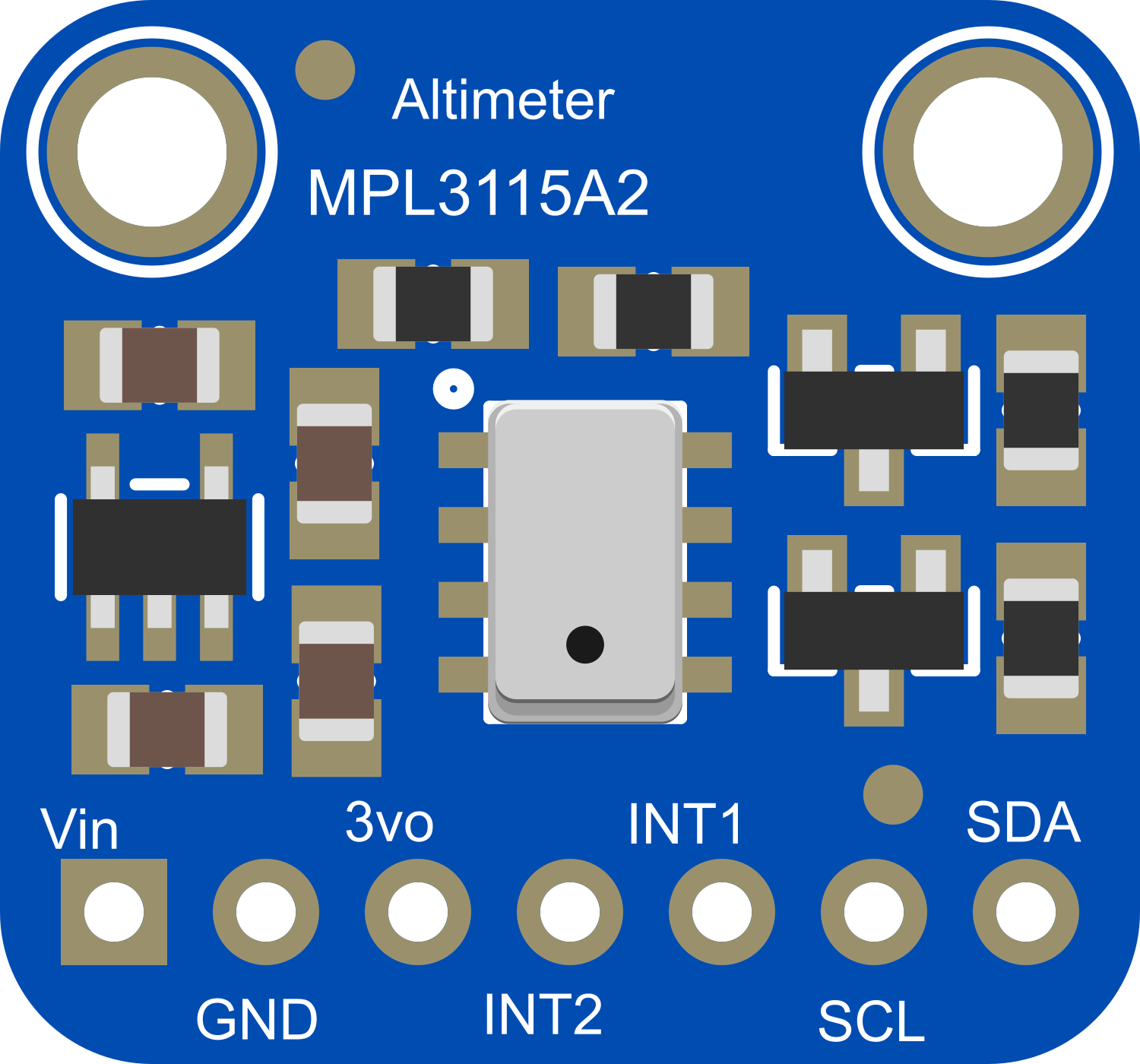
 Design with Adafruit MPL3115A2 I2C Barometric Pressure, Altitude, Temperature Sensor in Cirkit Designer
Design with Adafruit MPL3115A2 I2C Barometric Pressure, Altitude, Temperature Sensor in Cirkit DesignerIntroduction
The Adafruit MPL3115A2 is a compact, high-precision sensor module capable of measuring barometric pressure, altitude, and temperature. Utilizing the I2C communication protocol, it interfaces seamlessly with a wide range of microcontrollers, including the popular Arduino platform. This sensor is ideal for a variety of applications, such as personal weather stations, GPS navigation systems, drones, and altimeters.
Explore Projects Built with Adafruit MPL3115A2 I2C Barometric Pressure, Altitude, Temperature Sensor
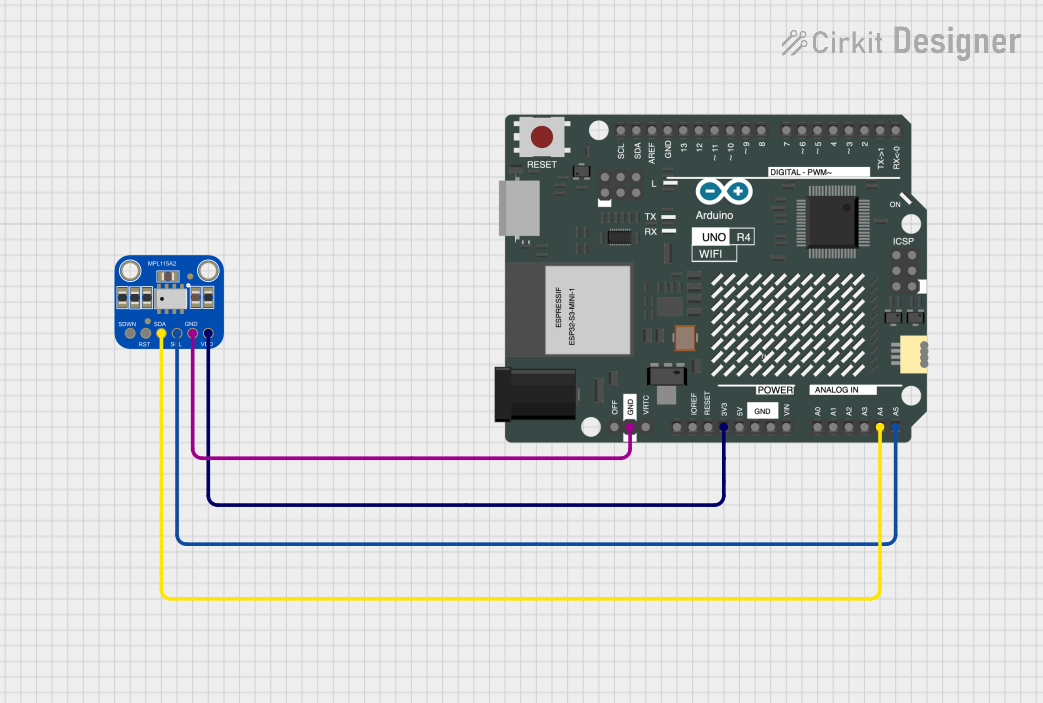
 Open Project in Cirkit Designer
Open Project in Cirkit Designer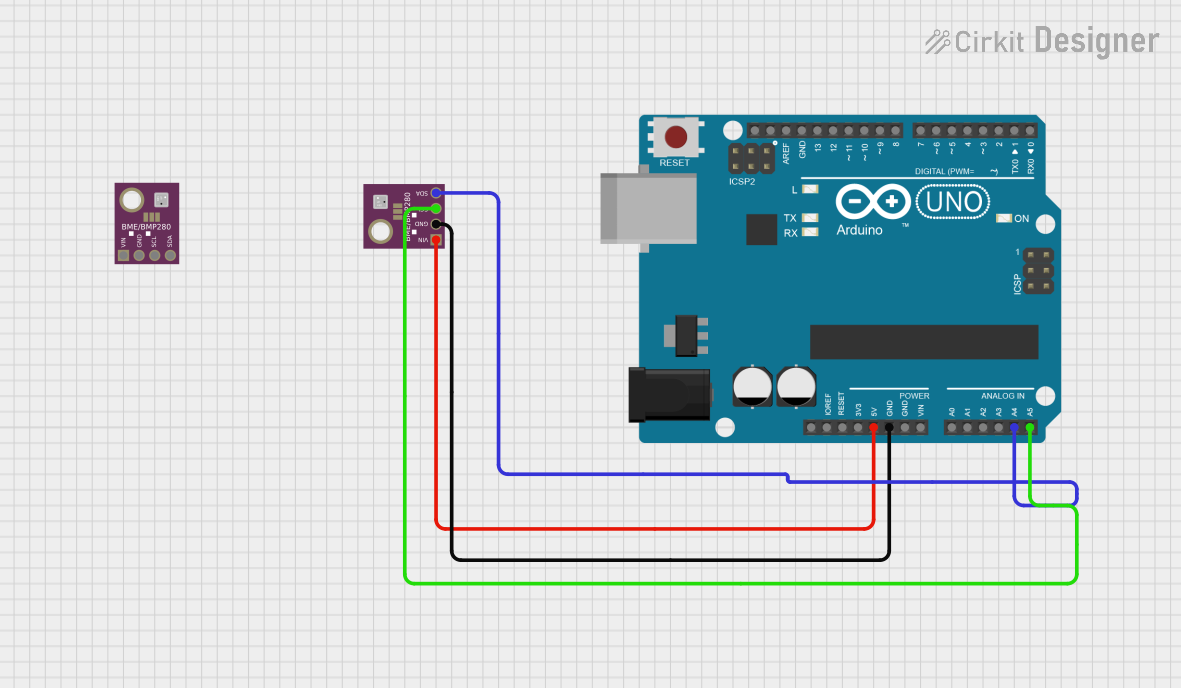
 Open Project in Cirkit Designer
Open Project in Cirkit Designer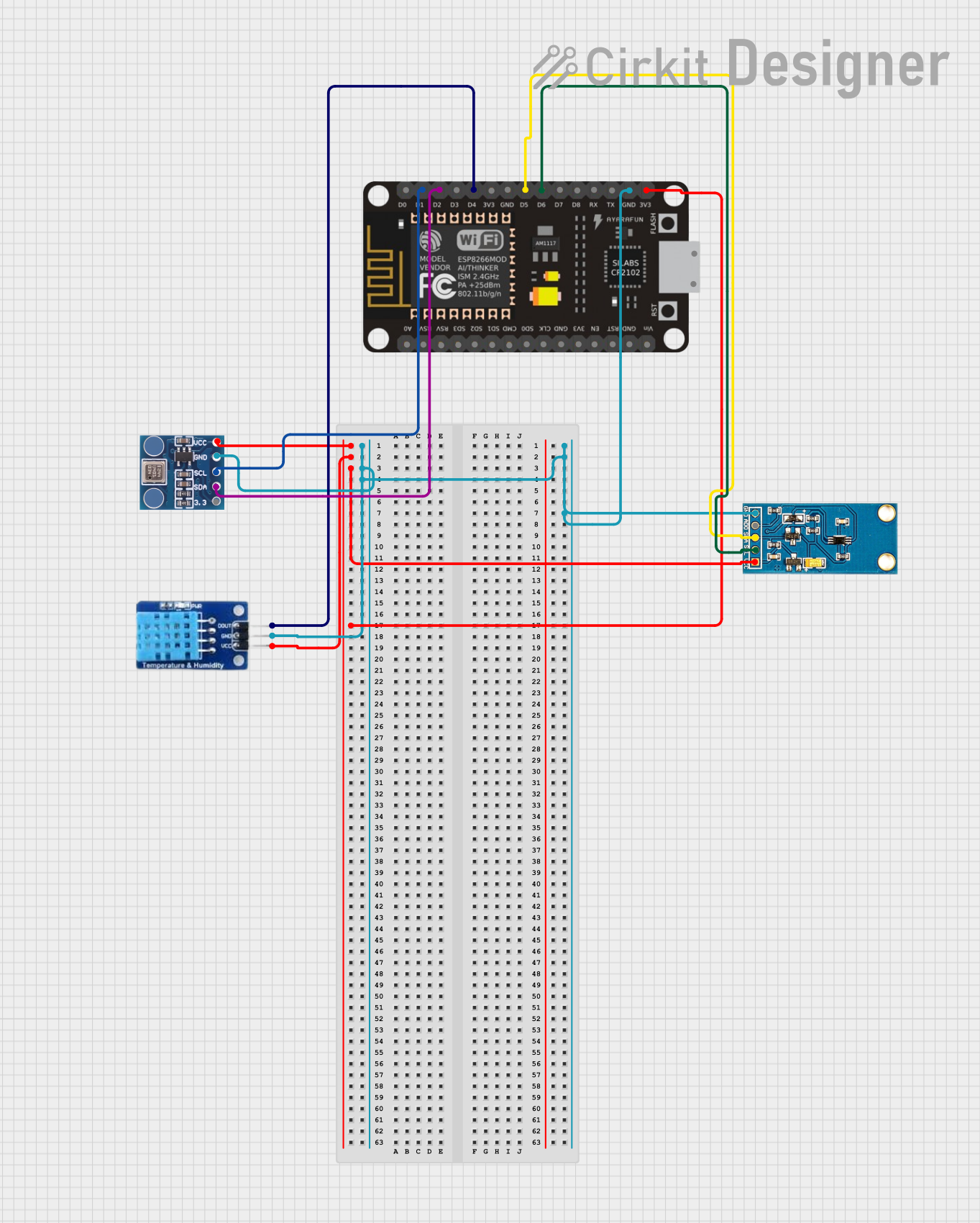
 Open Project in Cirkit Designer
Open Project in Cirkit Designer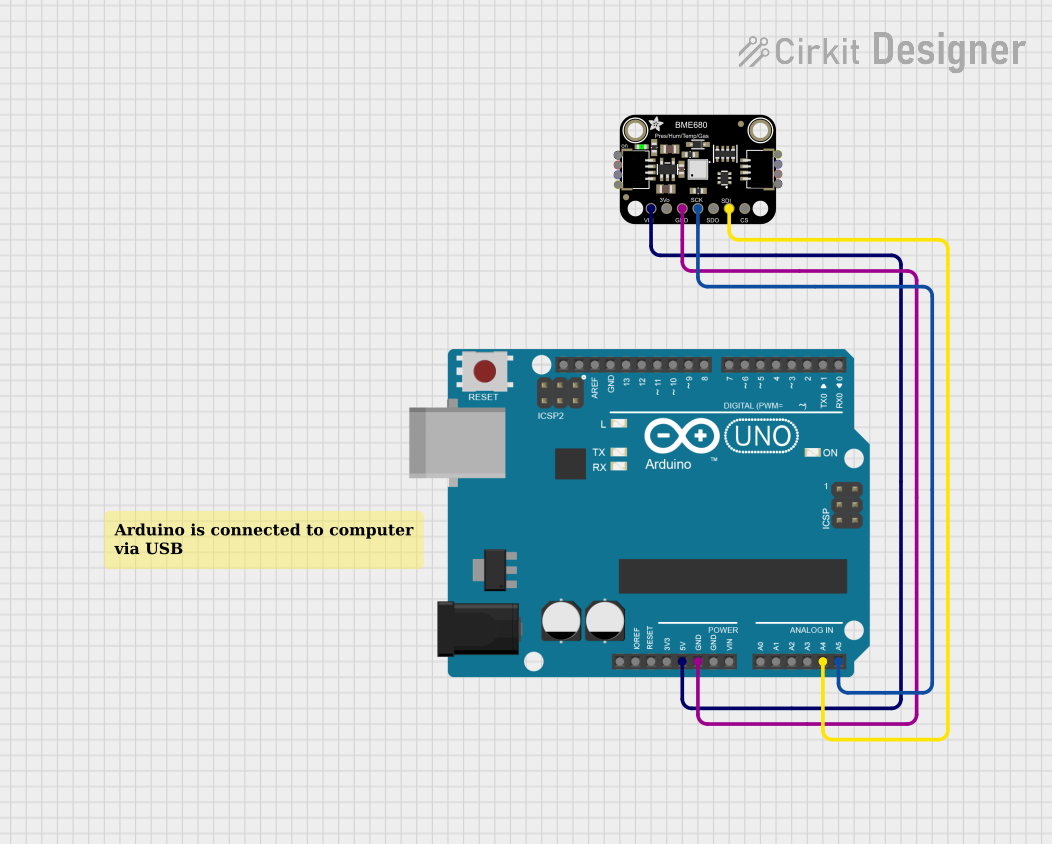
 Open Project in Cirkit Designer
Open Project in Cirkit DesignerExplore Projects Built with Adafruit MPL3115A2 I2C Barometric Pressure, Altitude, Temperature Sensor

 Open Project in Cirkit Designer
Open Project in Cirkit Designer
 Open Project in Cirkit Designer
Open Project in Cirkit Designer
 Open Project in Cirkit Designer
Open Project in Cirkit Designer
 Open Project in Cirkit Designer
Open Project in Cirkit DesignerTechnical Specifications
Key Features
- Pressure Range: 20 to 110 kPa
- Altitude Range: -700 to 10,000 m
- Temperature Range: -40 to 85°C
- Resolution: 0.01 kPa (pressure), 0.1 m (altitude), 0.1°C (temperature)
- Operating Voltage: 2.5V to 5.5V
- Interface: I2C (up to 400 kHz)
- 2.5 µA low power standby mode
Pin Configuration and Descriptions
| Pin Number | Name | Description |
|---|---|---|
| 1 | VDD | Power supply (2.5V to 5.5V) |
| 2 | GND | Ground connection |
| 3 | SCL | I2C clock line |
| 4 | SDA | I2C data line |
| 5 | INT | Interrupt output (active low) |
Usage Instructions
Interfacing with Arduino
Connecting the Sensor:
- Connect VDD to the 3.3V output on the Arduino.
- Connect GND to a ground pin on the Arduino.
- Connect SCL to the A5 pin (SCL) on the Arduino UNO.
- Connect SDA to the A4 pin (SDA) on the Arduino UNO.
- The INT pin can be left unconnected if the interrupt feature is not used.
Library Installation:
- Install the Adafruit MPL3115A2 library using the Arduino Library Manager or download it from the Adafruit GitHub repository.
Initialization and Configuration:
- Include the Adafruit MPL3115A2 library in your sketch.
- Create an instance of the sensor and begin communication.
Reading Sensor Data:
- Use the provided functions in the library to read pressure, altitude, and temperature.
Example Arduino Sketch
#include <Wire.h>
#include <Adafruit_MPL3115A2.h>
// Create an MPL3115A2 instance
Adafruit_MPL3115A2 baro = Adafruit_MPL3115A2();
void setup() {
Serial.begin(9600);
if (!baro.begin()) {
Serial.println("Could not find a valid MPL3115A2 sensor, check wiring!");
while (1);
}
}
void loop() {
float pressure = baro.getPressure(); // Get pressure in Pascals
float altitude = baro.getAltitude(); // Get altitude in meters
float temperature = baro.getTemperature(); // Get temperature in Celsius
// Print the sensor readings
Serial.print("Pressure: ");
Serial.print(pressure);
Serial.println(" Pa");
Serial.print("Altitude: ");
Serial.print(altitude);
Serial.println(" m");
Serial.print("Temperature: ");
Serial.print(temperature);
Serial.println(" C");
delay(500); // Wait half a second between readings
}
Important Considerations and Best Practices
- Ensure that the sensor is not exposed to condensation or water as it is not waterproof.
- Avoid physical stress and excessive heat to prevent damage to the sensor.
- Use pull-up resistors on the I2C lines if multiple devices are connected to the bus.
- For accurate altitude measurements, calibrate the sensor to a known pressure or altitude before use.
Troubleshooting and FAQs
Common Issues
- Sensor Not Detected: Ensure that the wiring is correct and that the sensor is properly powered.
- Inaccurate Readings: Calibrate the sensor, check for sources of heat near the sensor, and ensure that the sensor is not in a rapidly changing environment.
- I2C Communication Errors: Check for loose connections and ensure that pull-up resistors are in place if necessary.
FAQs
Q: Can the MPL3115A2 be used with a 5V microcontroller? A: Yes, the sensor can be interfaced with a 5V microcontroller, but ensure that the I2C lines are level-shifted to be compatible with the sensor's voltage levels.
Q: How can I calibrate the sensor for altitude measurements?
A: Use the setSeaPressure() function in the library to calibrate the sensor to the current sea level pressure.
Q: What is the purpose of the INT pin? A: The INT pin can be used to trigger an interrupt on the microcontroller when a measurement is ready or when certain pressure/altitude thresholds are reached.
For further assistance, consult the Adafruit MPL3115A2 datasheet and the Adafruit support forums.